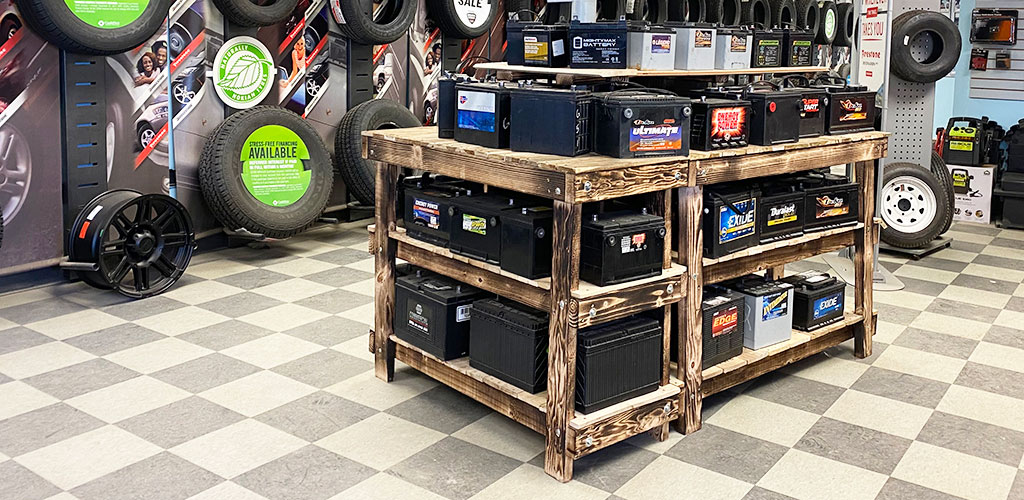The Science Behind Tire Fixing and Safety
When it comes to the complex world of tire upkeep and safety, there exists a realm of science that usually remains hidden by the typical motorist - morris tire. The products that compose a tire, the effect of tire stress on general safety and security, the ramifications of tread wear, the intricate dynamics of tire grip, and the often-overlooked relevance of correct wheel positioning all play vital roles in ensuring an automobile runs safely and successfully. As we navigate with the intricacies of tire repair work and security, it comes to be obvious that a much deeper understanding of these clinical principles is not only valuable however vital for every chauffeur when traveling
Tire Composition and Performance
What materials make up the composition of tires, and just how do these elements add to their capability on the road? Steel cords are integrated to boost the tire's toughness and help it maintain its shape under different road conditions.
The rubber compounds use hold and traction, permitting the tire to stick to the roadway surface and offer security throughout acceleration, braking, and cornering. On the whole, the careful option and combination of these materials ensure that tires can perform effectively and securely on different road surfaces and problems.
Impact of Tire Pressure on Safety
Maintaining proper tire stress is essential for making certain ideal safety and security and efficiency while driving. The effect of tire stress on safety and security can not be overemphasized. Underinflated tires are susceptible to getting too hot, which can bring about tire blowouts, particularly at broadband. Additionally, low tire pressure influences the handling and responsiveness of the vehicle, increasing the threat of crashes, particularly during emergency situation maneuvers. On the various other hand, overinflated tires have much less contact with the road surface area, reducing grip and triggering uneven endure the tire treads. This compromises the automobile's stability and stopping performance, posturing a considerable safety hazard. Properly filled with air tires also play a vital duty in fuel efficiency, as underinflated tires can enhance rolling resistance, leading to lowered gas mileage. Routinely inspecting and keeping the right tire pressure not only guarantees safety and security but additionally expands the lifespan of the tires, saving on replacement expenses over time.
Tread Put On and Its Ramifications
Correct tracking of tire tread wear is crucial for making sure optimum performance and safety when driving. As tires put on down, the depth of the walk lessens, reducing the tire's capability to maintain traction, particularly in damp or slippery conditions. The step pattern and depth play a crucial role in funneling water far from the tire to avoid hydroplaning and preserving grip when traveling surface.
Signs of too much walk wear include bald areas, irregular wear, and the appearance of wear signs. Hairless spots indicate local wear, which can cause instability and increased risk of blowouts. Irregular wear might recommend concerns with tire suspension, positioning, or inflation elements. Use indications are constructed into the tire step and end up being visible when the step deepness gets to a particular low point, indicating the need for great post to read prompt replacement.

Recognizing Tire Grip Dynamics
Keeping track of tire step wear not just makes certain optimal performance and safety however additionally straight impacts the traction dynamics of the tires on different road surface areas. Tire grip is a critical element of car handling and security, as it figures out the grip in between the tires and the road. Grip characteristics vary depending upon road problems such as completely dry pavement, wet roadways, snow, or ice.
Recognizing tire traction characteristics is necessary for chauffeurs to adapt their driving behavior according to the roadway conditions. tire tracks morris il. Regularly examining tire step deepness and condition can substantially boost traction efficiency, making sure much safer driving experiences throughout various surface areas
Relevance of Appropriate Wheel Placement
Making certain correct wheel alignment plays a vital informative post duty in optimizing vehicle efficiency and prolonging tire longevity. Correct wheel placement includes readjusting the angles of the wheels to supplier specs, making sure that they are perpendicular to the ground and alongside each other. When placement is off, it can cause unequal tire wear, lowered fuel effectiveness, and compromised handling.
Among the vital benefits of preserving correct wheel alignment is boosted handling and security. Misaligned wheels can trigger the lorry to pull away, affecting guiding control and general driving experience. In addition, appropriate alignment advertises even tire wear, avoiding premature tire substitute and minimizing upkeep expenses in the future.

Final Thought
In conclusion, the science behind tire repair and security is critical for maintaining car efficiency and making sure motorist safety and security. By recognizing tire composition, stress, tread wear, grip dynamics, and wheel alignment, drivers can prevent crashes and lengthen the lifespan of their tires.
The products that compose a tire, the effect of tire pressure on general security, the implications of tread wear, the detailed dynamics of tire traction, and the often-overlooked significance of proper wheel positioning all play essential duties in guaranteeing an automobile operates safely and successfully. On the various other hand, overinflated tires have much less call with the road surface, minimizing visit this site traction and triggering irregular wear on the tire footsteps. Frequently inspecting and maintaining the proper tire stress not just ensures safety and security yet also prolongs the life-span of the tires, saving on replacement prices in the lengthy run.
Checking tire step wear not just ensures optimal performance and security however likewise straight affects the grip characteristics of the tires on various roadway surfaces. Tire traction is an important aspect of car handling and safety, as it identifies the grip between the tires and the roadway.